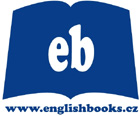A - With a wedding cake or something like that, if it is cut before the director is satisfied I have to go and make it look untouched.
B - Supermarkets stock most things all year round, but not always in the correct form.
C - I never really paid much attention to history lessons at school and now this is one of the aspects of the work that I enjoy the most.
D Without the use of chemicals they probably looked a bit marked and oddly shaped.
E - Few of them would have had an oven, so most meat would be cooked over a fire.
F - The work is obviously good fun, otherwise I wouldn't do it, but it's perhaps not as glamorous as people imagine.
G - And, if it is actually going to be eaten, hygiene must be considered.
H - The film was set a hundred years ago and my job was to prepare the food for a dinner-party scene.









